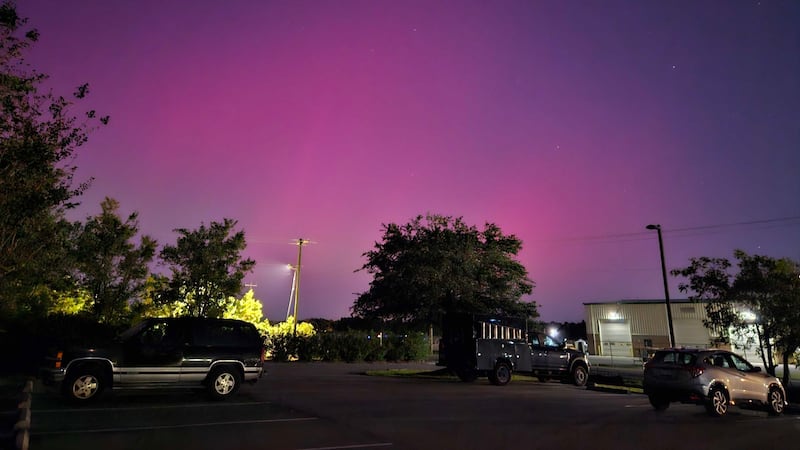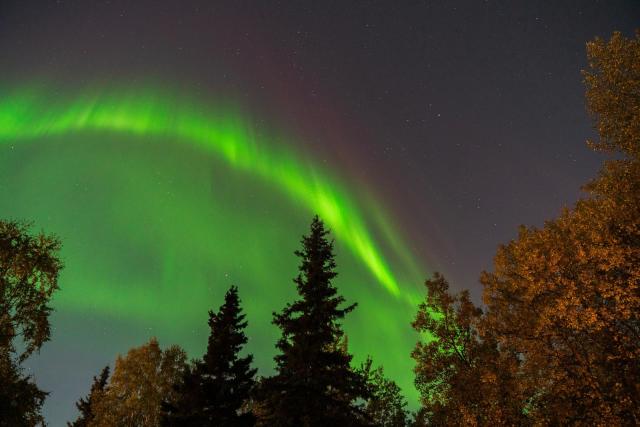
Aurora Borealis Causes Disruption in Radio and Radar Signals in North Carolina, Leading to Fatal Accident.
In a rare and tragic event, the Aurora Borealis, or Northern Lights, caused unexpected disruptions in radio and radar signals in North Carolina, leading to a fatal accident. The Northern Lights, usually seen in regions closer to the Arctic Circle, made an unusual appearance in the state due to heightened solar activity. While the natural display was stunning, the charged particles that create the aurora also interfered with communication and navigation systems, contributing to a devastating accident.
The Unusual Aurora Borealis Display
On the night of the accident, people across North Carolina were treated to a rare sight as the skies lit up with the vibrant colors of the Aurora Borealis. Due to a powerful geomagnetic storm caused by solar flares, the aurora extended much farther south than usual. As the sky shimmered with waves of green, pink, and purple light, it captivated onlookers who are more accustomed to such displays occurring in polar regions like Alaska or Canada.
However, this breathtaking phenomenon came with unforeseen consequences. The high levels of solar activity that caused the aurora also led to disruptions in the Earth’s magnetic field, which interfered with radio and radar signals across the region.
Disruption of Radio and Radar Signals
Solar storms, like the one responsible for the Northern Lights that night, release charged particles into the Earth’s atmosphere. These particles interact with the planet’s magnetic field and can cause geomagnetic storms, which are known to disrupt satellite communications, GPS, radio signals, and radar systems. Typically, such disruptions are localized to areas closer to the poles, but in this case, the effects reached as far south as North Carolina.
Reports from various sources indicate that multiple communication systems experienced interruptions, including air traffic control radars and emergency radio frequencies. Amateur radio operators and pilots in the area also noticed unusual interference, and there were documented cases of GPS malfunctioning during the period of heightened solar activity.
The Fatal Accident
Tragically, the disruptions caused by the geomagnetic storm are believed to have played a role in a fatal accident that occurred on a highway near the city of Raleigh. According to investigators, a truck driver lost control of his vehicle after experiencing issues with his GPS and radio communication systems. The driver was reportedly relying on GPS navigation due to poor visibility on the road, and the signal interference caused him to veer off course, colliding with another vehicle.
The accident resulted in multiple fatalities, with several other passengers severely injured. Emergency services were initially delayed due to difficulties with radio communication, which compounded the tragedy. While responders were eventually able to reach the scene, the disruptions hindered their ability to coordinate quickly, contributing to the severity of the incident.
Understanding the Impact of Solar Storms

While the Aurora Borealis is generally seen as a beautiful and harmless natural phenomenon, its underlying cause—solar storms—can have serious consequences for technology and infrastructure. Solar flares and coronal mass ejections (CMEs) from the sun send bursts of charged particles toward Earth, which can interact with the planet’s magnetic field and disrupt electrical systems.
These disruptions can affect a wide range of technologies, from power grids and GPS systems to radio and satellite communications. In extreme cases, geomagnetic storms have been known to cause blackouts and communication failures, with more serious impacts possible if critical infrastructure is affected.
In this case, the interference in North Carolina was unexpected, as the auroral activity was not predicted to extend so far south. The fatal accident highlights the potential dangers of solar storms and the importance of monitoring space weather, particularly as societies become more reliant on technology for communication and navigation.
Moving Forward: Improving Preparedness
In the wake of this tragic accident, there are calls for improved monitoring and forecasting of space weather events. While organizations like NOAA’s Space Weather Prediction Center already track solar activity and issue warnings for potential disruptions, better preparedness and communication with the public could help prevent future tragedies.
Some experts suggest that increased public awareness about the potential risks of geomagnetic storms could help people take precautions when solar activity is high, especially in unexpected areas like North Carolina. Additionally, infrastructure improvements, such as more robust backup systems for GPS and communication networks, could help mitigate the effects of such disruptions.
Conclusion
What began as a rare and awe-inspiring display of the Aurora Borealis in North Carolina ended in tragedy due to the unexpected consequences of solar storm-induced disruptions. The fatal accident serves as a stark reminder of the unseen dangers that geomagnetic storms can pose, even in regions where the Northern Lights are rarely seen. As solar activity increases in the coming years, efforts to improve space weather forecasting and public preparedness will be critical in preventing future incidents.


Leave a Reply